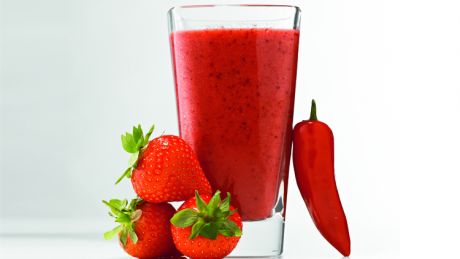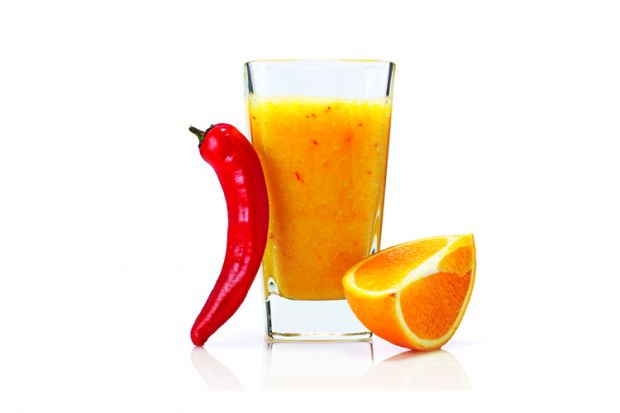Fat-Burning Smoothie Recipes
Harness the fat-torching power of chilli with these two smoothie recipes

Fat loss food doesn’t have to be bland. These sweet and spicy fat-burning smoothies, created by sports nutrition specialist Scott Baptie, are packed with tasty ingredients that boast an array of fat-fighting properties. Taste the burn.
RECOMMENDED: Smoothie Recipes
Strawberry, Raspberry and Chilli Fat-Burning Smoothie Recipe
- Handful of strawberries: Strawberries are rich in polyphenols, which help to improve blood sugar control and reduce fat storage.
- ½ red chilli, deseeded and finely chopped: Chilli contains capsaicin, which burns fat by increasing your body’s energy expenditure levels.
- Handful of frozen raspberries: Raspberries provide fibre, which helps keep you full and avoid the temptation to snack.
- 100ml natural yogurt: Natural yogurt is high in protein, which helps maintain muscle mass when eating for fat loss.
- 400ml cold green tea: Green tea contains ECGC, an antioxidant that helps you get lean by breaking down fat.
- Handful of kale: Kale is a source of calcium, a mineral that plays a key role in regulating body fat levels.
RECOMMENDED: Best Fat Burners
Orange and Chilli Fat-Burning Smoothie Recipe

- Juice of 1 orange: Oranges are rich in vitamin C, and studies have shown people with high levels burn fat more efficiently.
- ½ a chilli: Chilli contains capsaicin, which – as well as its metabolism boosting properties – helps to suppress appetite.
- 1 scoop of whey protein isolate: Whey protein isolate helps build muscle. Because muscle is active tissue, the more you have, the more fat you burn.
- 400ml green tea, cold: Green tea contains the antioxidant ECGC, which causes an increase in fat oxidisation.
- Handful of kale: Kale is a source of calcium, a mineral that plays a key role in regulating body fat levels.
RECOMMENDED: Healthy Breakfasts
Scott Baptie is a physique and sports nutritionist, online personal trainer and director of FoodForFitness.co.uk
Coach is a health and fitness title. This byline is used for posting sponsored content, book extracts and the like. It is also used as a placeholder for articles published a long time ago when the original author is unclear. You can find out more about this publication and find the contact details of the editorial team on the About Us page.

